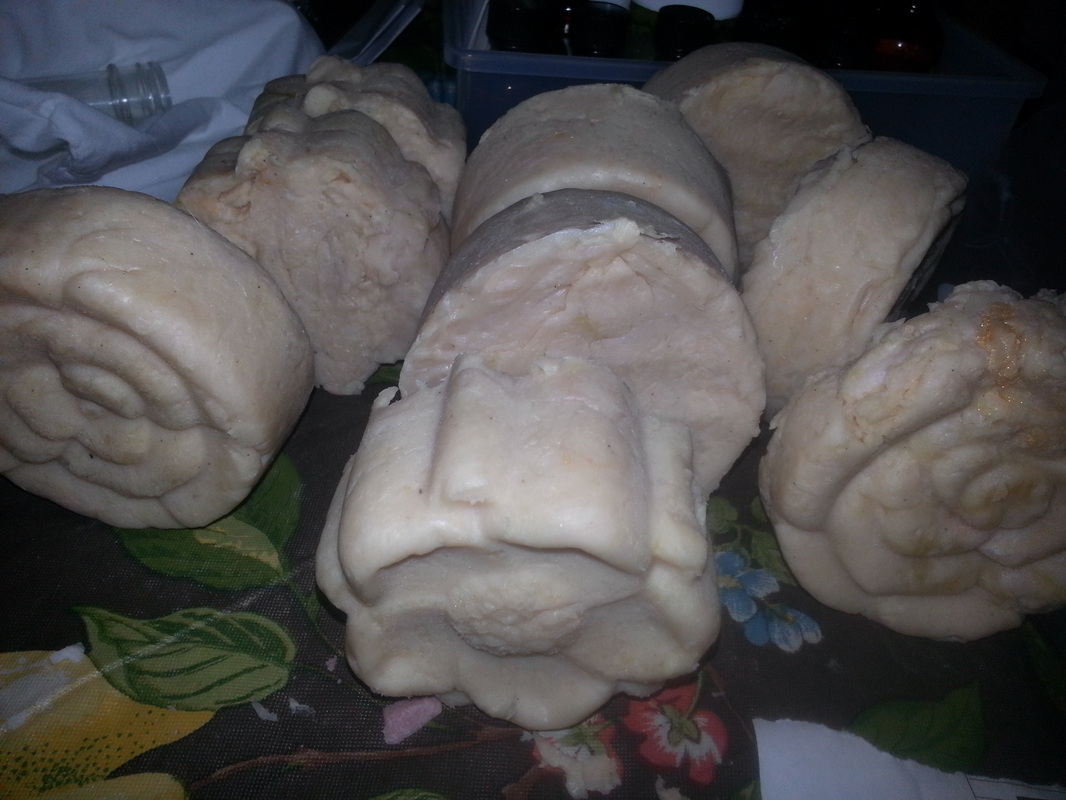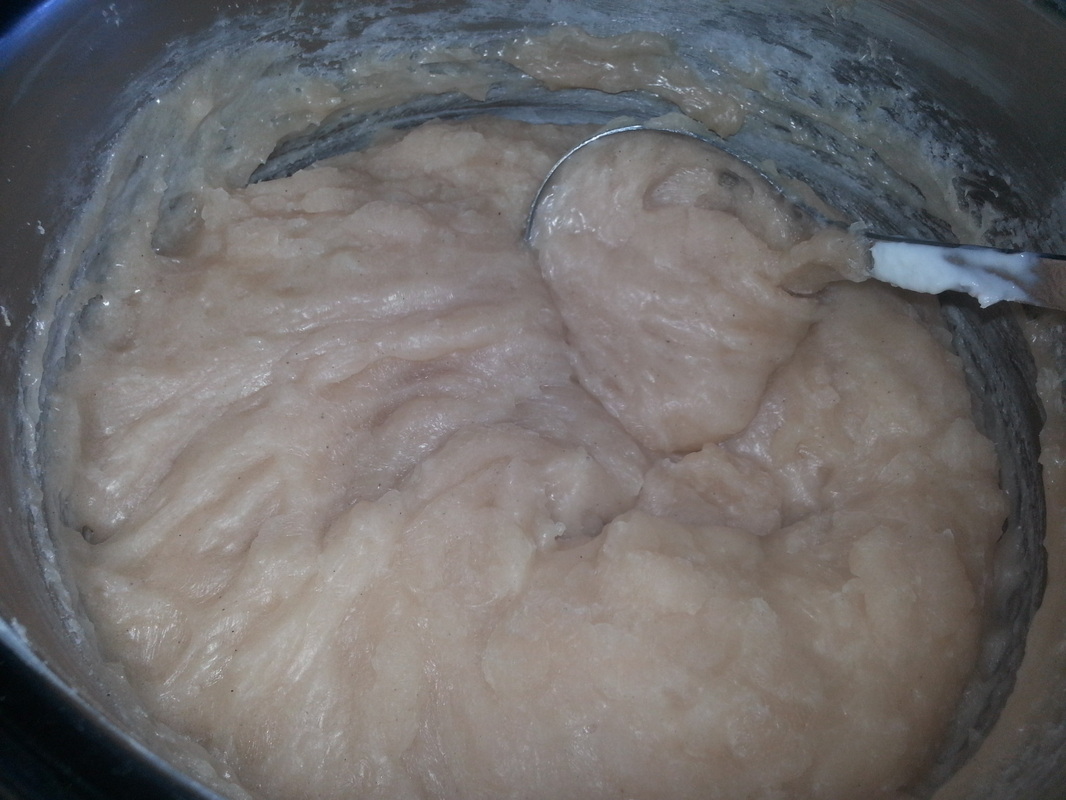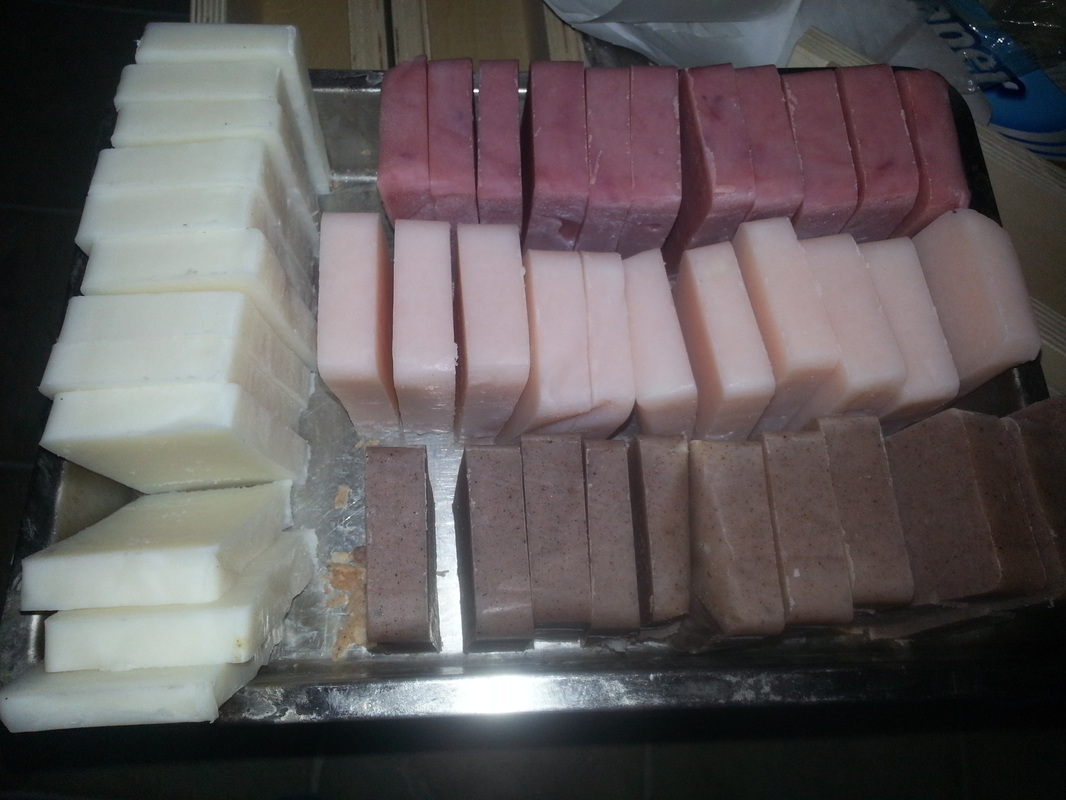The soap in the moulds was hot processed the old way, that is cooked in a large pot on the stove, then put into moulds. The advantages of this are several: the soap can be used the next day since it is cured by heat, scents and speciality oils are added after the soap is chemically balanced, after saponification, and the lye does not affect them. In cold process soap, the soap is poured into moulds when it reaches simple incorporation of lye,oil and water, called trace. Then it is cured for 6-8 weeks in order to be useable. During that time, the essential oils are diminished greatly by the saponification process.
The best way to make hot process soap is not to spend time cooking it though. It is to bring it to trace, or the point where all ingredients are mixed to a pudding like consistency, then add essential oils and other ingredients and pour it into wooden moulds lined with waxed heavy paper (freezer paper works wonderfully) and put the soap into an oven set at 170. The oven is turned off after an hour leaving the soap to continue its saponification process overnight. The next day, the soap is removed from the moulds, cut and left to air cure for a week or 10 days, but it is useable immediately, since the saponification process is accelerated by the heat.
This project resulted in 5 soaps from one recipe: Orange Cream, Pure, Rosy Geranium, Lavender, and Pink Grapefruit with Vanilla Specs.The Orange Cream smells so delicious, you may want to eat it!






 RSS Feed
RSS Feed